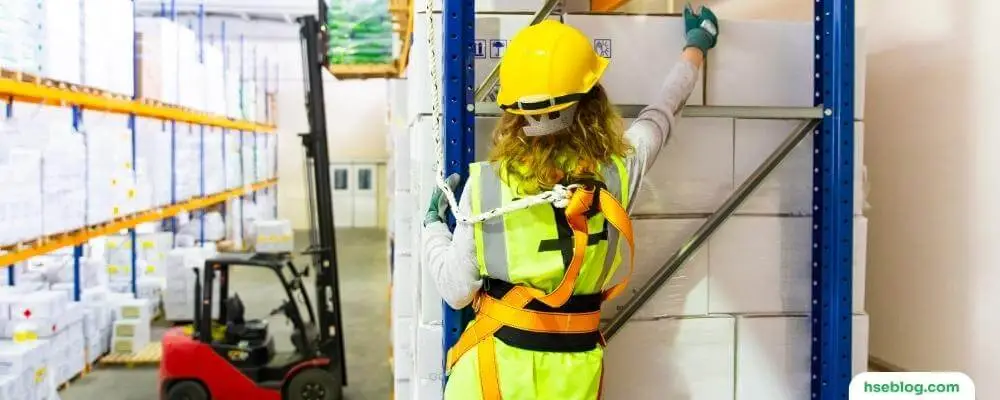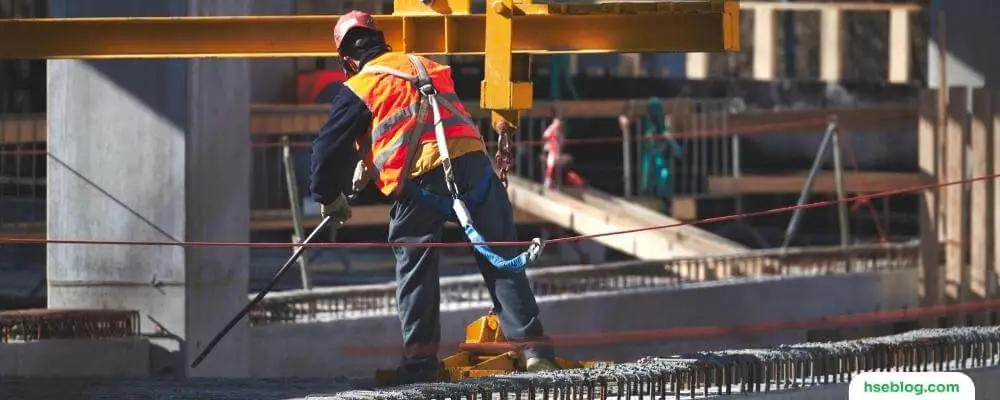In many industries and workplaces, safety should always be a top priority. Whether you’re a construction worker scaling towering heights, an arborist tending to trees, or someone working at an elevated position, properly using safety equipment is crucial to prevent accidents and protect lives. One such indispensable piece of safety equipment is the safety harness.
A safety harness is a vital tool designed to secure a person to a structure or an anchor point, keeping them safe from falls and ensuring their well-being while working at heights. It is a system of straps, buckles, and connectors that distribute the forces generated during a fall, minimizing the risk of injury or fatality.
However, it’s important to note that merely wearing a safety harness isn’t enough. To ensure maximum effectiveness and mitigate potential risks, it’s essential to understand the correct usage and follow proper procedures. In this blog post, we will delve into the fundamentals of safety harnesses, discussing their purpose, safety harness parts, and, most importantly, the six essential steps to use them properly.
Whether you’re a seasoned professional looking for a refresher or a newcomer to working at heights, this guide will provide you with the knowledge and insights you need to ensure your safety and well-being. So, let’s dive in and explore the world of safety harnesses, empowering ourselves with the knowledge to work securely at elevated positions.

What is Safety Harness?
A safety harness is a critical piece of personal protective equipment (PPE) designed to protect individuals from falls and related injuries in various work environments. Typically made from durable materials such as high-strength polyester or nylon, a safety harness distributes the forces exerted during a fall across the body, minimizing the risk of serious injury or fatality.
Key Features of a Safety Harness:
- Compliance Labels: Displays certifications and compliance with safety standards set by organizations such as OSHA (Occupational Safety and Health Administration) and ANSI (American National Standards Institute).
- Full Body Support: Includes straps that secure around the shoulders, chest, waist, and legs to ensure even distribution of force.
- D-Rings: Strong metal rings located at strategic points (commonly on the back) serve as attachment points for lanyards, lifelines, or other fall protection systems.
- Adjustability: Features adjustable buckles and straps to accommodate different body sizes and ensure a snug, comfortable fit.
- Padding: Often includes padded sections on straps to enhance comfort during prolonged use.
Six Steps On How to Use Safety Harness
When it comes to personal fall protection systems, using a safety harness properly is essential. When worn and maintained correctly, a safety harness can be the difference between a minor accident and a catastrophic one, including fatality. Even though there have been significant improvements in harness design, falls are still a leading cause of death in construction-related occupations. So, it’s about having the right equipment and using it correctly.
Here are six simple steps to ensure your safety harness is in good working order and that you wear it correctly.
1. Straighten Your Safety Harness
To straighten your harness, hold it by the D-ring on the back strap, give it a good shake to disentangle, and arrange all straps and buckles neatly.
2. Inspect the Safety Harness
Before wearing the harness, unbuckle and release any chest, leg, or waist straps that may be fastened. This allows you to thoroughly inspect the buckles and other hardware to ensure they’re firmly attached. If you notice any signs of damage, such as frayed or cut straps or loose buckle springs, don’t use the harness, as it may not adequately protect you during a fall.
3. Wear the Harness
Like wearing suspenders, slip the shoulder straps of the harness over your shoulders. Adjust it so that the D-ring is centrally positioned on your back, between your shoulder blades. This correct placement of the D-ring is crucial for keeping you upright if a fall occurs.

4. Fasten and Adjust the Leg Straps
Depending on the type of buckles your harness has—tongue buckles, parachute buckles, pass-style buckles, or quick-connect buckles—you must pass the webbing through the buckle and adjust it to a snug fit. Ensure the leg straps are secure but not too tight to hinder your ability to stand straight. If your harness has a waist strap, secure it at this stage.
5. Fasten and Adjust the Chest Strap
Fasten the chest strap and adjust it to be snug across the middle of your chest. The chest and shoulder straps should hold the harness in place even if you fall head-first. A loose chest strap can pose a choking risk if a fall occurs.
6. Confirm the Harness is Fitting Correctly
Once all components are connected and fastened, ensure the harness fits snugly yet allows free movement. Any excess strap length should be tucked into the loop keepers to prevent it from getting caught on any equipment or materials.
By following these steps, you can ensure your safety harness is worn and maintained correctly, potentially saving your life in the event of a fall.
How to Inspect a Harness Before Using It
Before using a safety harness, it’s crucial to thoroughly inspect it to ensure it’s in good condition. Here’s how to do it:
- Begin by lifting the harness with its D-ring located at the back. A gentle shake should help the straps align themselves for a straightforward inspection.
- Ensure all the buckles on the harness are undone. This will allow you to examine all components thoroughly.
- Next, closely examine the entire harness for any signs of wear and tear. You’re looking for things such as frayed, worn, or missing threads, cracks in the webbing, or any foreign substances that could compromise the integrity of the harness.
- Additionally, pay close attention to the metal components of the harness, particularly the strap fasteners and the D-ring. They should be in good shape without any signs of deformation or cracks that could impact their strength.
- If your harness has grommets, these, too, need to be inspected. Ensure they are securely attached and do not misshapen or show other damage signs.
- Lastly, check the buckle tongues. These should also be firmly in place and not bent out of shape.
By following these steps, you can be confident that your harness is safe before use.
Conclusion
In conclusion, a safety harness is a vital piece of equipment for any work that involves heights. Its role in protecting you from serious harm or even death cannot be overstated. However, having a safety harness isn’t enough. It is equally important to know how to use it correctly, inspect it for damage, and ensure a proper fit. Following the six steps outlined in this blog post, you’ll be well-equipped to safely utilize your safety harness. Remember, the key to workplace safety isn’t merely having the right tools but understanding and applying them correctly. So, stay informed, vigilant, and, most importantly, safe.

